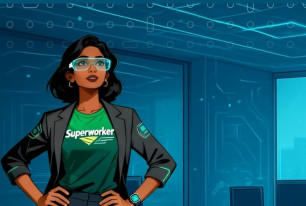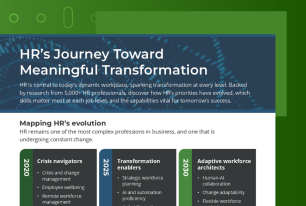Hiring Externally or Promoting Internally? How to Know the Right Approach
Are you recruiting for a role that didn’t exist a year ago? You are not alone. With roles changing rapidly, businesses must decide whether to look outside for talent or develop internal talent to fill skills gaps.
Share
The buy vs. build equation. Reimagined for today
We have seen plenty of talk about the seismic shift in the workplace, with a rapid increase in roles that will appear in the future that do not even exist today. Even within continuing jobs we can expect that 39% of core job skills will have changed by 2030¹.
The practical impact of this prediction is that HR and business leaders face a critical question: when confronted with a new or dramatically changed role, should you look outside for talent (“buy”) or develop someone internally (“build”)? The lines are increasingly blurred as the pace of change accelerates and roles emerge for which there are no clear qualifications or prior experience—think drone operators in agriculture or resource sectors, or manufacturing and maintenance roles within the renewable energy sector.
Traditionally, the “buy” approach brought benefits like fresh perspectives and immediately deployable skills, while “build” promoted engagement, retention, and cultural alignment. However, when all organizations are at the same early adoption stage there is nowhere to go to “buy” the skills in. Similarly, taking a build approach also poses challenges as your existing employees will also likely have a skills gap. In addition, when a role is so new, the skills and knowledge needed to be successful is much harder to define and often evolving at pace. So, what are our options?
Shifting the talent lens: From skills to potential
Instead of focusing solely on static qualifications, leading organizations are shifting their lens toward underlying behavioral attributes. Those durable skills that empower employees to learn, adapt, and thrive in ambiguity. When no candidate (internal or external) has the target experience, success hinges on identifying people who:
- Show learning agility and can quickly master new concepts and technologies
- Are comfortable operating in uncertainty and can maintain productivity as the role and requirements evolve
- Provide constructive feedback and help refine the position as it moves from start-up mode to business as usual
- Demonstrate a track record of stepping into new territory and “building” their own career
Of course, role-specific competencies still matter, but they can be developed more easily when a person has demonstrated these adaptive traits. Resilience, flexibility and lifelong learning have been identified as critical skills workers will need to thrive in the future¹
A practical checklist to make better talent decisions
This approach becomes much easier to apply as a “future build” strategy if you already have objective information on your employees to know which of these durable skills they already possess. So here is a practical checklist to help make better talent decisions in this new work reality.
- Assess behavioral attributes: Use objective data to identify individuals with high learning agility, resilience, and adaptability.
- Map skill gaps: Compare current employee capabilities to new role requirements to estimate the upskilling needed.
- Review career pathways: Look for employees who’ve thrived in ambiguous or evolving roles before, and rethink what career progression looks like.
- Foster a culture of continuous learning: Create pathways for employees to acquire skills as business needs change, rather than making one-off hiring or promotion decisions.
Ready to help your people grow in every direction?
Reskilling agility has replaced static experience as the real competitive edge.
Explore how SHL’s Talent Mobility solution can help you identify reskilling potential, design flexible career journeys, and build a future-ready workforce.
¹Stats from WEF, Future of Jobs Report 2025









